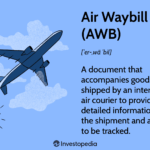What Is Austerity?
The term austerity refers to a set of economic policies that a government implements in order to control public sector debt. Governments put austerity measures in place when their public debt is so large that the risk of default or the inability to service the required payments on its obligations becomes a real possibility.
In short, austerity helps bring financial health back to governments. Default risk can spiral out of control quickly and, as an individual, company, or country slips further into debt, lenders will charge a higher rate of return for future loans, making it more difficult for the borrower to raise capital.
Key Takeaways
- Austerity refers to strict economic policies that a government imposes to control growing public debt, defined by increased frugality.
- There are three primary types of austerity measures: revenue generation (higher taxes) to fund spending, raising taxes while cutting nonessential government functions, and lower taxes and lower government spending.
- Austerity is controversial, and national outcomes from austerity measures can be more damaging than if they hadn’t been used.
- The United States, Spain, and Greece all introduced austerity measures during times of economic uncertainty.
How Austerity Works
Governments experience financial instability when their debt outweighs the amount of revenue they receive, resulting in large budget deficits. Debt levels generally increase when government spending increases. As mentioned above, this means that there is a greater chance that federal governments can default on their debts. Creditors, in turn, demand higher interest to avoid the risk of default on these debts. In order to satisfy their creditors and control their debt levels, they may have to take certain measures.
Austerity only takes place when this gap—between government receipts and government expenditures—shrinks. This situation occurs when governments spend too much or when they take on too much debt. As such, a government may need to consider austerity measures when it owes more money to its creditors than it receives in revenues. Implementing these measures helps put confidence back into the economy while helping restore some semblance of balance to government budgets.
Austerity measures indicate that governments are willing to take steps to bring some degree of financial health back to their budgets. As a result, creditors may be willing to lower interest rates on debt when austerity measures are in place. But there may be certain conditions on these moves.
For instance, interest rates on Greek debt fell following its first bailout. However, the gains were limited to the government having decreased interest rate expenses. Although the private sector was unable to benefit, the major beneficiaries of lower rates are large corporations. Consumers benefited only marginally from lower rates, but the lack of sustainable economic growth kept borrowing at depressed levels despite the lower rates.
Special Considerations
A reduction in government spending doesn’t simply equate to austerity. In fact, governments may need to implement these measures during certain cycles of the economy.
For example, the global economic downturn that began in 2008 left many governments with reduced tax revenues and exposed what some believed were unsustainable spending levels. Several European countries, including the United Kingdom, Greece, and Spain, turned to austerity as a way to alleviate budget concerns.
Austerity became almost imperative during the global recession in Europe, where eurozone members didn’t have the ability to address mounting debts by printing their own currency. Thus, as their default risk increased, creditors put pressure on certain European countries to aggressively tackle spending.
Types of Austerity
Broadly speaking, there are three primary types of austerity measures:
- Generating revenue generation through higher taxes. This method often supports more government spending. The goal is to stimulate growth with spending and capturing benefits through taxation.
- The Angela Merkel model. Named after the German chancellor, this measure focuses on raising taxes while cutting nonessential government functions.
- Lower taxes and lower government spending. This is the preferred method of free-market advocates.
Taxes
There is some disagreement among economists about the effect of tax policy on the government budget. Former Ronald Reagan adviser Arthur Laffer famously argued that strategically cutting taxes would spur economic activity, paradoxically leading to more revenue.
Still, most economists and policy analysts agree that raising taxes will raise revenues. This was the tactic that many European countries took. For example, Greece increased value-added tax (VAT) rates to 23% in 2010. The government raised income tax rates on upper-income scales, along with adding new property taxes.
Reducing Government Spending
The opposite austerity measure is reducing government spending. Most consider this to be a more efficient means of reducing the deficit. New taxes mean new revenue for politicians, who are inclined to spend it on constituents.
Spending takes many forms, including grants, subsidies, wealth redistribution, entitlement programs, paying for government services, providing for the national defense, benefits to government employees, and foreign aid. Any reduction in spending is a de facto austerity measure.
At its simplest, an austerity program that is usually enacted by legislation may include one or more of the following measures:
- A cut or a freeze—without raises—of government salaries and benefits
- A freeze on government hiring and layoffs of government workers
- A reduction or elimination of government services, temporarily or permanently
- Government pension cuts and pension reform
- Interest on newly issued government securities may be cut, making these investments less attractive to investors, but reducing government interest obligations
- Cuts to previously planned government spending programs such as infrastructure construction and repair, health care, and veterans’ benefits
- An increase in taxes, including income, corporate, property, sales, and capital gains taxes
- A reduction or increase in the money supply and interest rates by the Federal Reserve as circumstances dictate to resolve the crisis.
- Rationing of critical commodities, travel restrictions, price freezes, and other economic controls, particularly in times of war
Criticism of Austerity
The effectiveness of austerity remains a matter of sharp debate. While supporters argue that massive deficits can suffocate the broader economy, thereby limiting tax revenue, opponents believe that government programs are the only way to make up for reduced personal consumption during a recession. Cutting government spending, many believe, leads to large-scale unemployment. Robust public sector spending, they suggest, reduces unemployment and therefore increases the number of income-tax payers.
Although austerity measures may help restore financial health to a nation’s economy, reduced government spending may lead to higher unemployment.
Economists such as John Maynard Keynes, a British thinker who fathered the school of Keynesian economics, believe that it is the role of governments to increase spending during a recession to replace falling private demand. The logic is that if demand is not propped up and stabilized by the government, unemployment will continue to rise and the economic recession will be prolonged.
But austerity runs contradictory to certain schools of economic thought that have been prominent since the Great Depression. In an economic downturn, falling private income reduces the amount of tax revenue that a government generates. Likewise, government coffers fill up with tax revenue during an economic boom. The irony is that public expenditures, such as unemployment benefits, are needed more during a recession than a boom.
Examples of Austerity
United States
Perhaps the most successful model of austerity, at least in response to a recession, occurred in the United States between 1920 and 1921. The unemployment rate in the U.S. economy jumped from 4% to almost 12%. Real gross national product (GNP) declined almost 20%—greater than any single year during the Great Depression or Great Recession.
President Warren G. Harding responded by cutting the federal budget by almost 50%. Tax rates were reduced for all income groups, and the debt dropped by more than 30%. In a speech in 1920, Harding declared that his administration “will attempt intelligent and courageous deflation, and strike at government borrowing…[and] will attack high cost of government with every energy and facility.”
Greece
In exchange for bailouts, the EU and European Central Bank (ECB) embarked on an austerity program that sought to bring Greece’s finances under control. The program cut public spending and increased taxes often at the expense of Greece’s public workers and was very unpopular. Greece’s deficit has dramatically decreased, but the country’s austerity program has been a disaster in terms of healing the economy.
Mainly, austerity measures have failed to improve the financial situation in Greece because the country is struggling with a lack of aggregate demand. It is inevitable that aggregate demand declines with austerity. Structurally, Greece is a country of small businesses rather than large corporations, so it benefits less from the principles of austerity, such as lower interest rates. These small companies do not benefit from a weakened currency, as they are unable to become exporters.
While most of the world followed the financial crisis in 2008 with years of lackluster growth and rising asset prices, Greece has been mired in its own depression. Greece’s gross domestic product (GDP) in 2010 was $299.36 billion. In 2014, its GDP was $235.57 billion according to the United Nations. This is staggering destruction in the country’s economic fortunes, akin to the Great Depression in the United States in the 1930s.
Greece’s problems began following the Great Recession, as the country was spending too much money relative to tax collection. As the country’s finances spiraled out of control and interest rates on sovereign debt exploded higher, the country was forced to seek bailouts or default on its debt. Default carried the risk of a full-blown financial crisis with a complete collapse of the banking system. It would also be likely to lead to an exit from the euro and the European Union.



